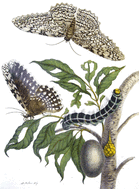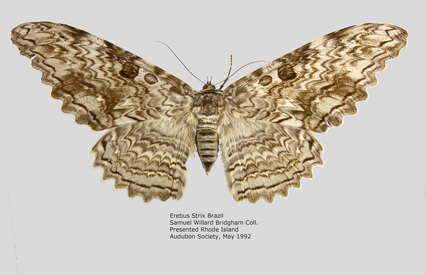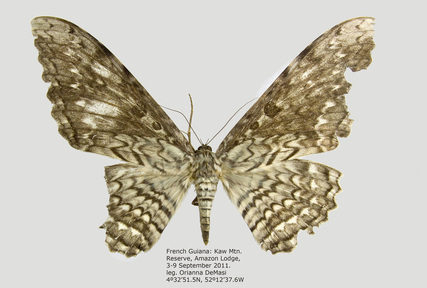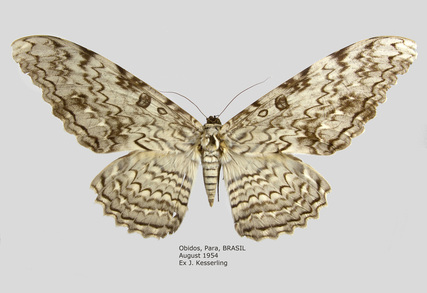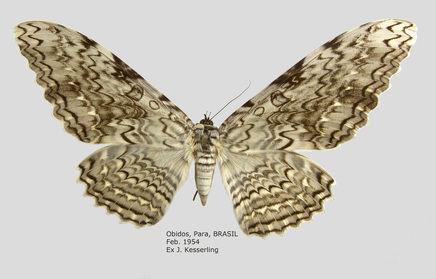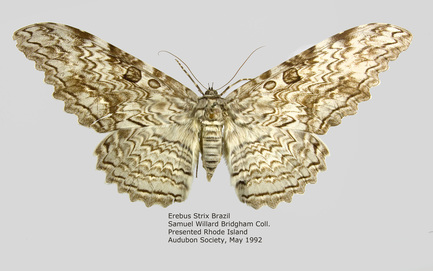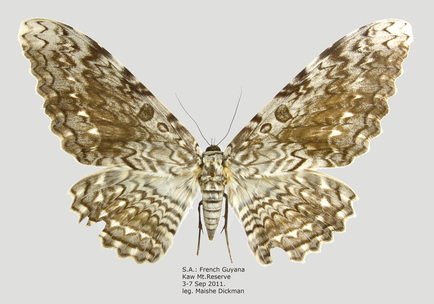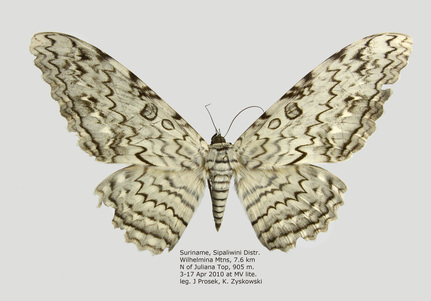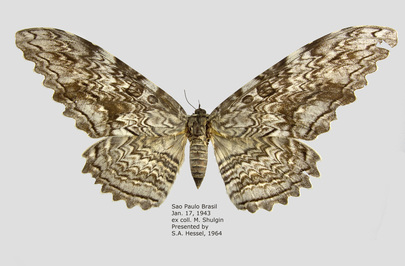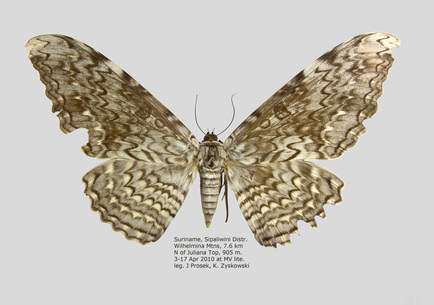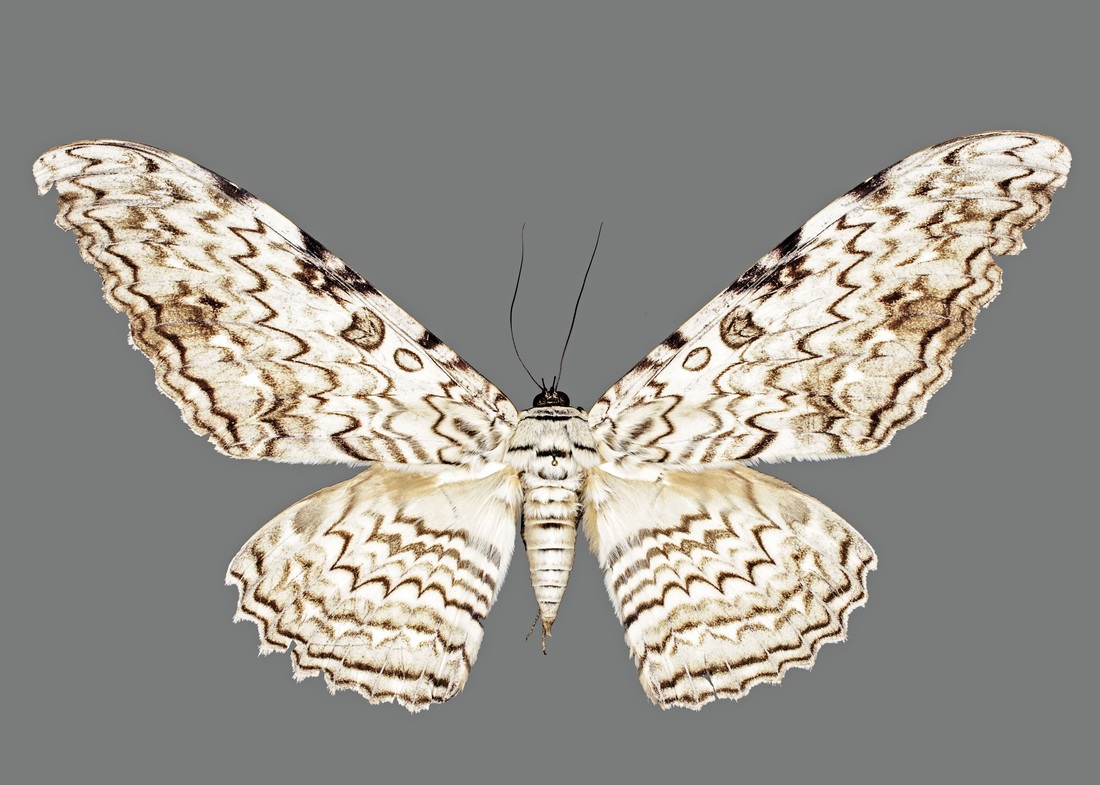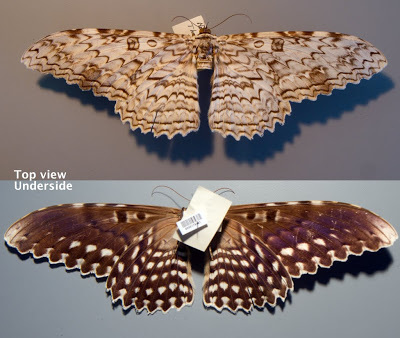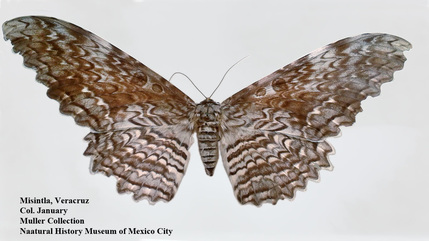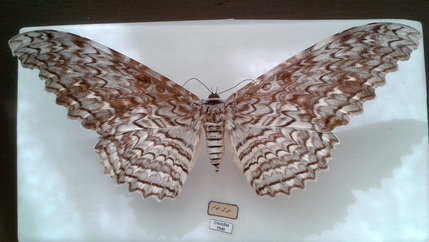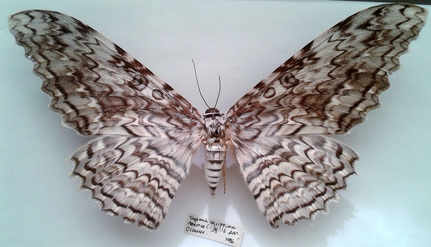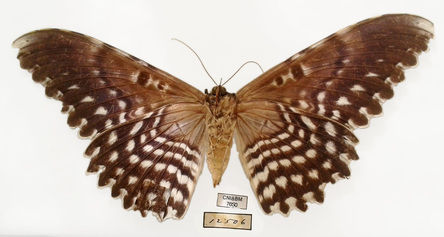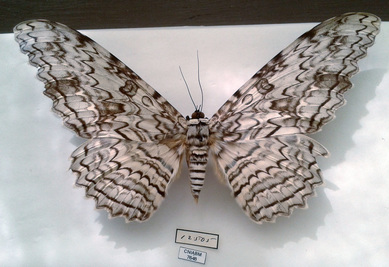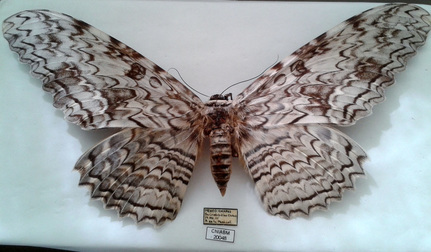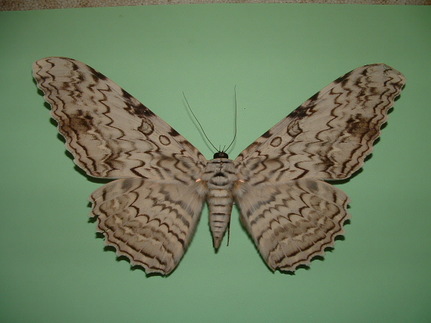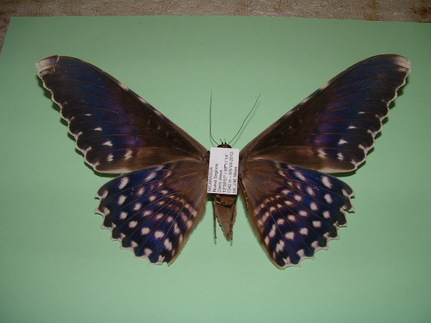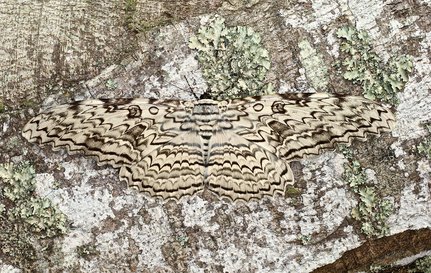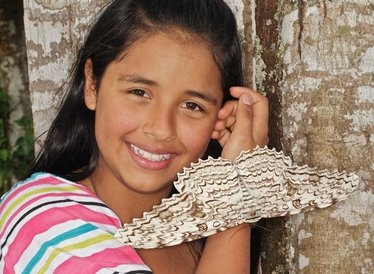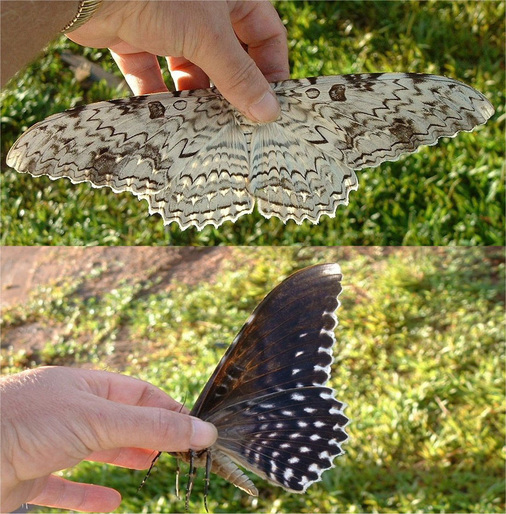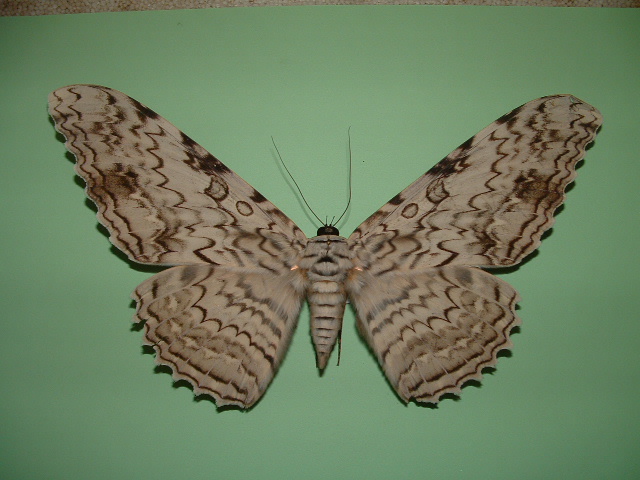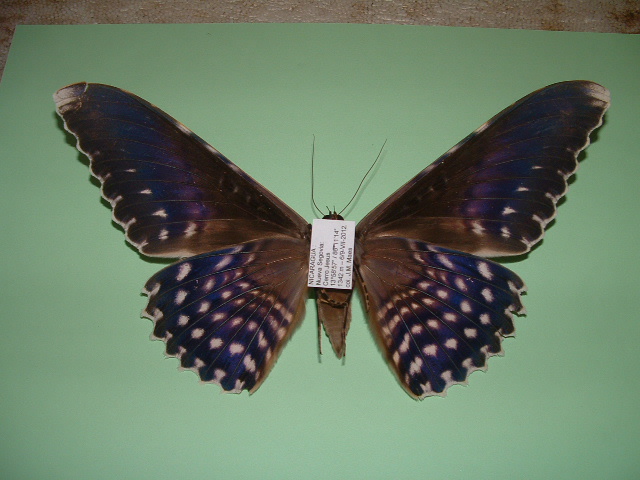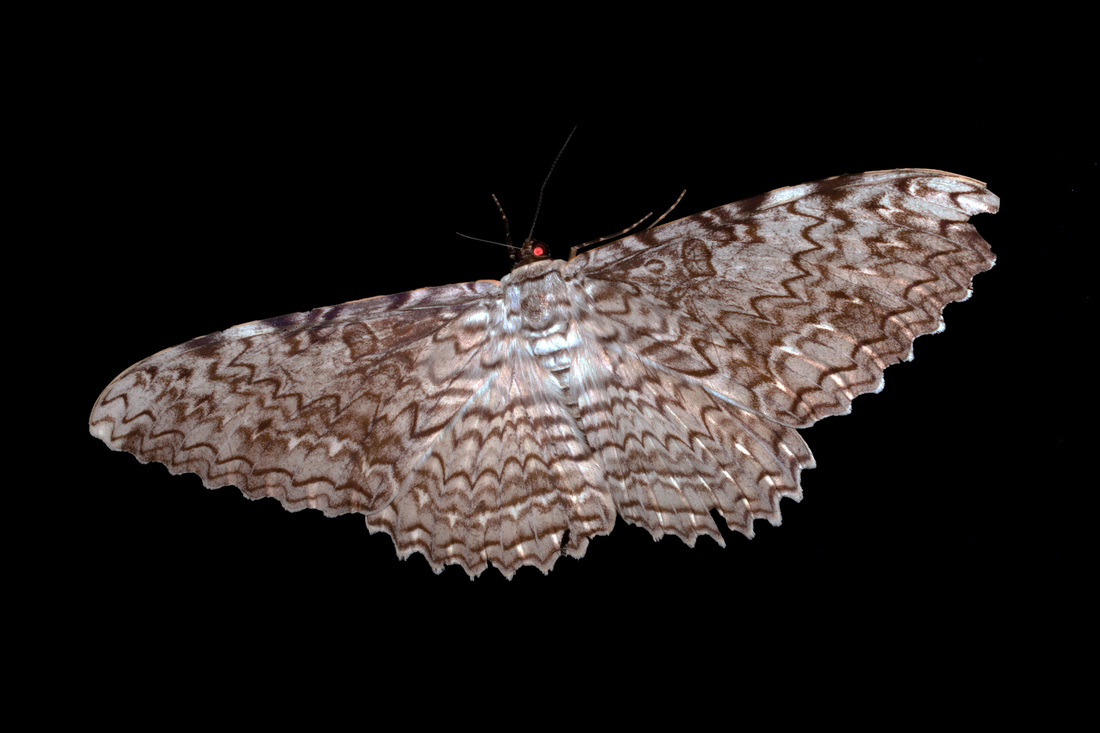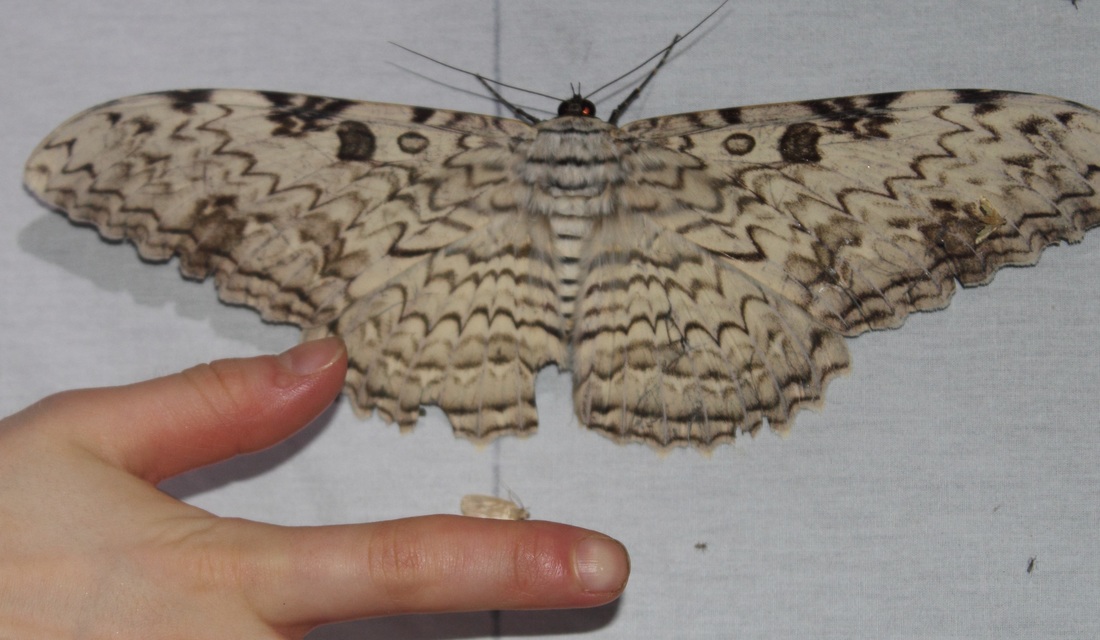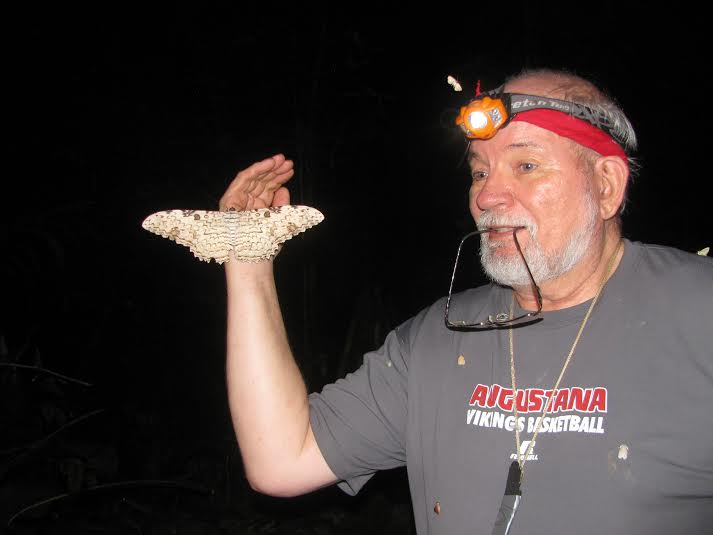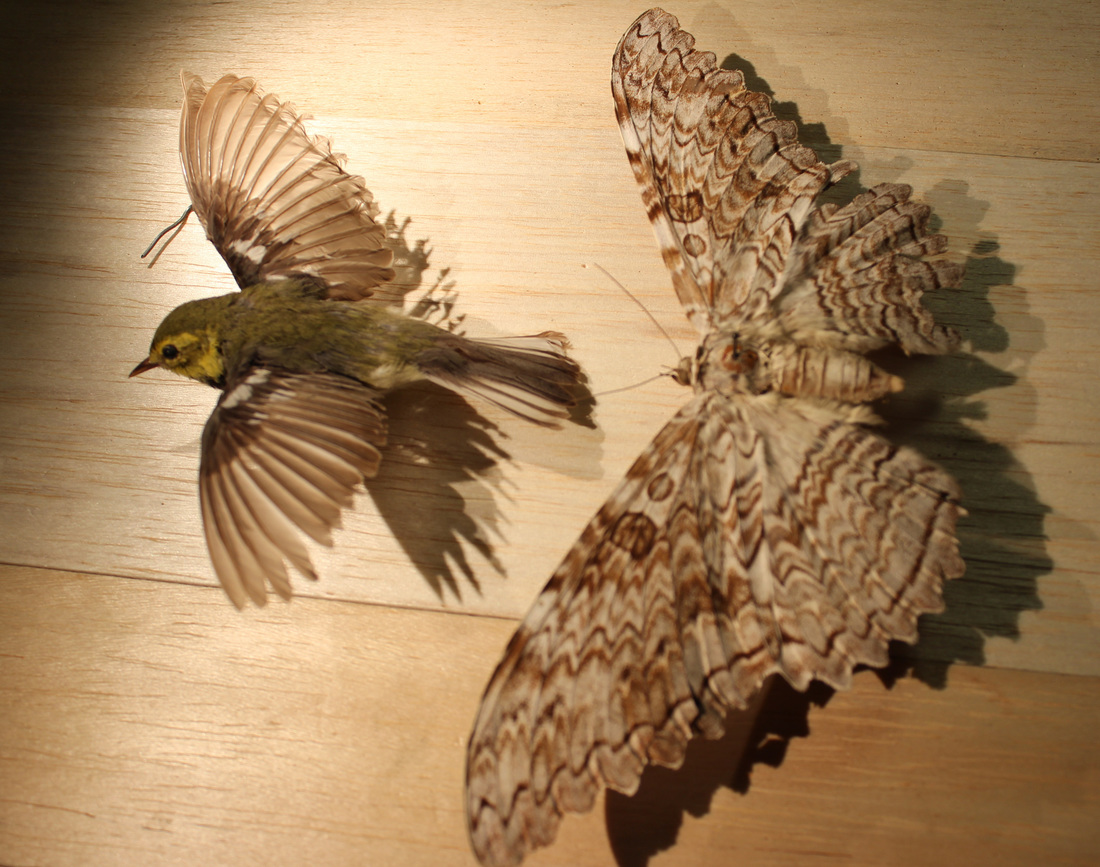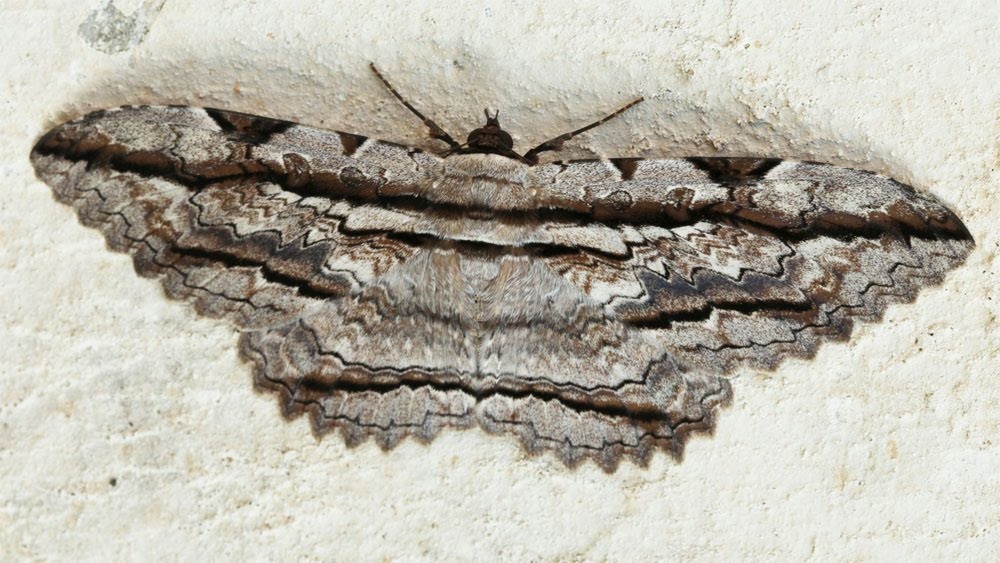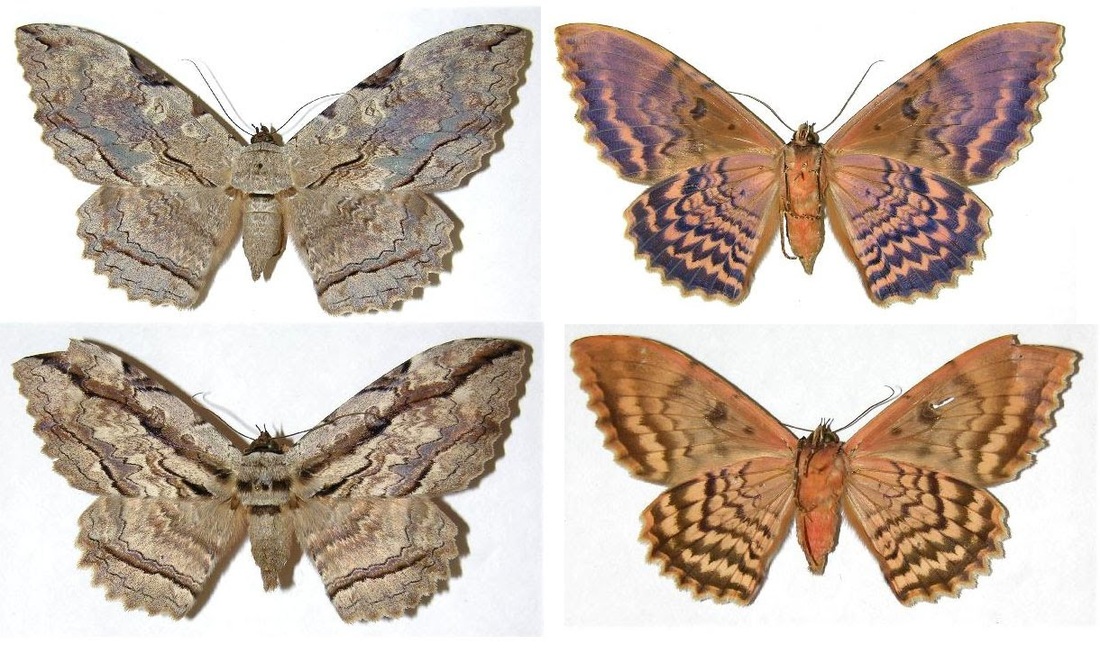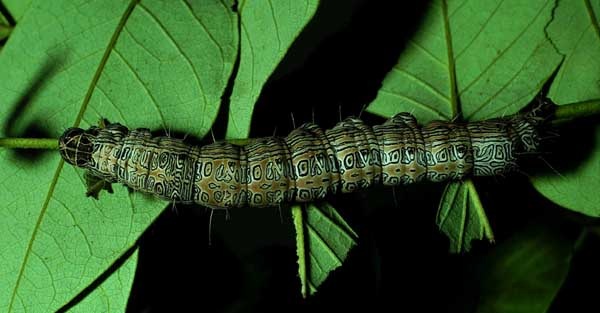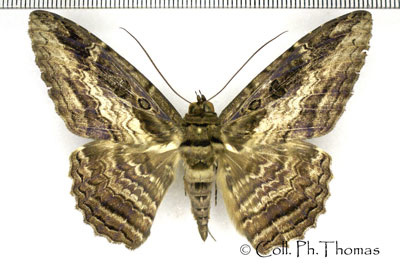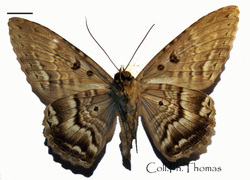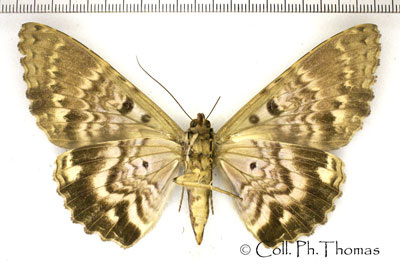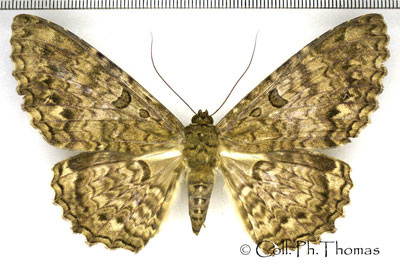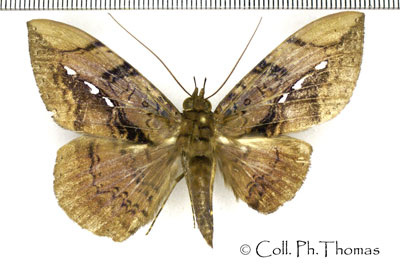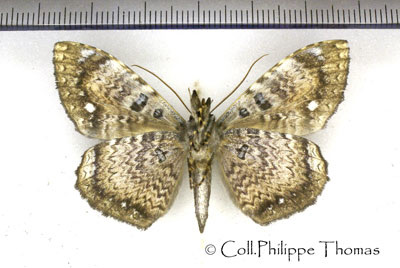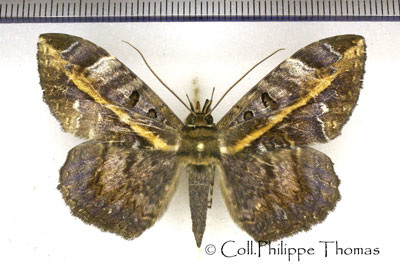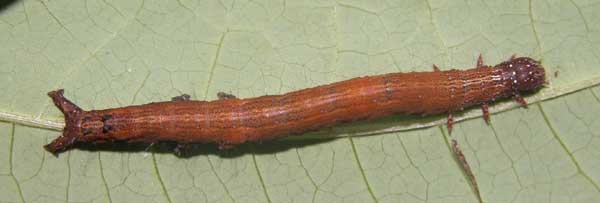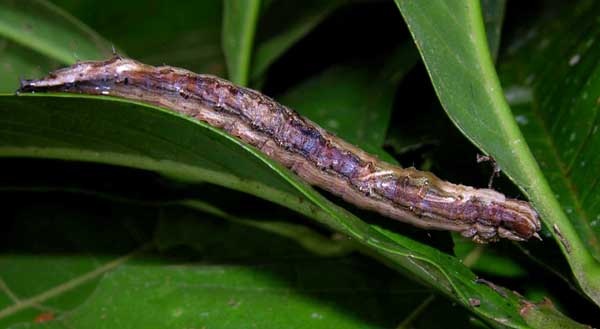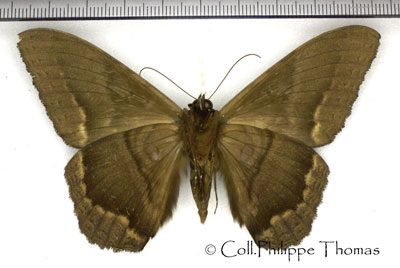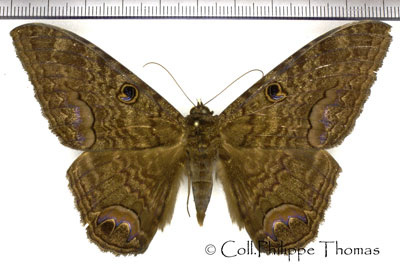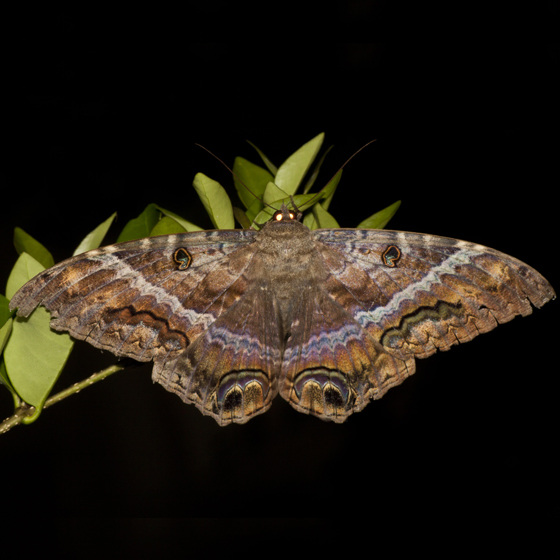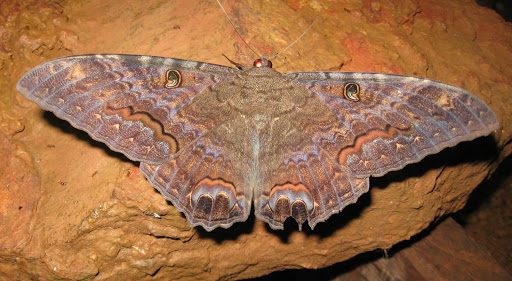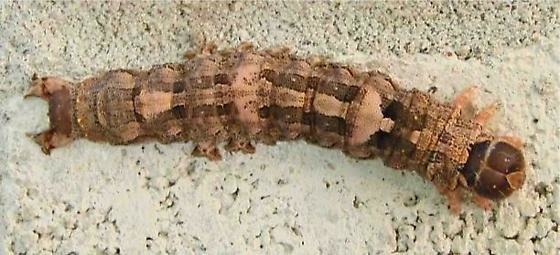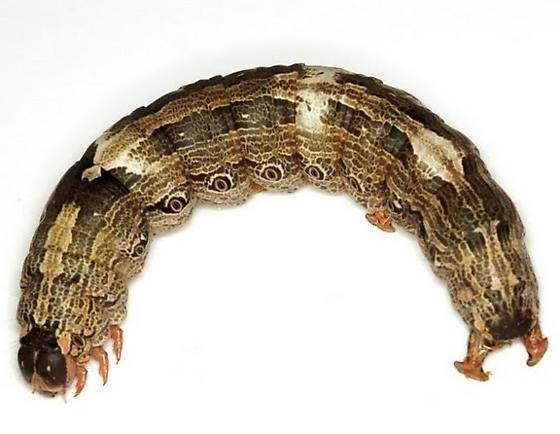If you google for images of the "white witch," you'll get pages of hits about the occult and death metal bands. So try again with "Thysania agrippina," and you will see moths on pins, in mounts, and on people's hands or heads for scale. I won't replicate all of these here. Rather I'll link to a few images that illustrate important information, and post images that we have recorded or received from our correspondents.

Likely the most famous Depiction of the white witch is the 1705 painting by Maria Sibylla Merian (right). Merian was an artist and naturalist with a particular interest in the metamorphosis of caterpillars (a poorly understood process in the 17th century). Following a stay in Suriname, she published Metamorphosis Insectorum Surinamensium, a book illustrated with the the flora and fauna of that country. The painting of the white witch shows each life stage, elegantly rendered but completely erroneous. The immature stages shown are a mish-mash of other lepidopteran forms, saturniid, sphingid, even arachnid (the egg mass). But the painting is influential; many of those with whom I have corresponded will inform me that the life cycle of the white witch has been worked out - "are you aware of the painting by Merian ..."
|
The nine images below are from the Yale Peabody Museum collection, photographed 4 Apr 2015. The fact that they were each processed in exactly the same way means that the colors are accurate and comparable. If we had many more clear images of specimens, we might be able to find patterns. Are moths fresher at the onset of rainy season? Are there male/female color or pattern differences? Is there any evidence in the markings of regional populations? Thanks to Larry Gall, a noctuid expert and Informatics Manager at the Museum.
|
Image sent to me by Andrey Zheludev, who renders beautiful photography of lepidoptera, e.g., slideshow. This specimen from Guyana. |
Next 6 images from Coleccion Muller, Museo de Historia Natural, Ciudad de Mexico, contributed by Maria Eugenia Diaz Batres, Curator.
View above and below of specimen from Guyana, (c) 2013 Andrey Zheludev, among many beautiful images of tropical lepidoptera.
Images of moth collected at Nueva Segovia in Nicaragua, above and below, sent to me by Jean Michel Maes, Museo Entomologico de Leon.
Photos below with permission from Robert Oelman (https://www.flickr.com/photos/roboelman/), from Ecuador. I rotated the photo at left for better display; the moth was actually oriented with wings pointed vertically (as typically).
Moth on light sheet, observed as part of a Survey of macro-moths in wet tropical forests around Piro Station, Osa Conservation, Costa Rica. Feb, 2015. Photos (and excellent detailed collection record) sent by by David G Larson (Augustana Univ, Alberta CA).
White witch relatives. If you have can find very little information about an individual, you might learn something by researching his family. We're looking at the close relatives of the WW , some pictured below.
|
Many high quality photos of zenobia on the BOLD systems page for T. zenobia Upper/lower side views of 2 specimens at right. |
|
Another genus in the Tribe Thermesiini: Letis. At right, L. buteo This and the following 4 image sets from a Noctuidae page of Philippe Thomas' images of neotropical moths of Guyana. |
|
Ascalapha odorata image from a striking collection of Guyanan moth species. Noctuidae: Ophiderinae: Ascalapha odorata Linnaeus, 1758, male. Camp Caiman (Mountain of Kaw, French Guiana), April 1, 2011. Photo: Andres Urbas |
